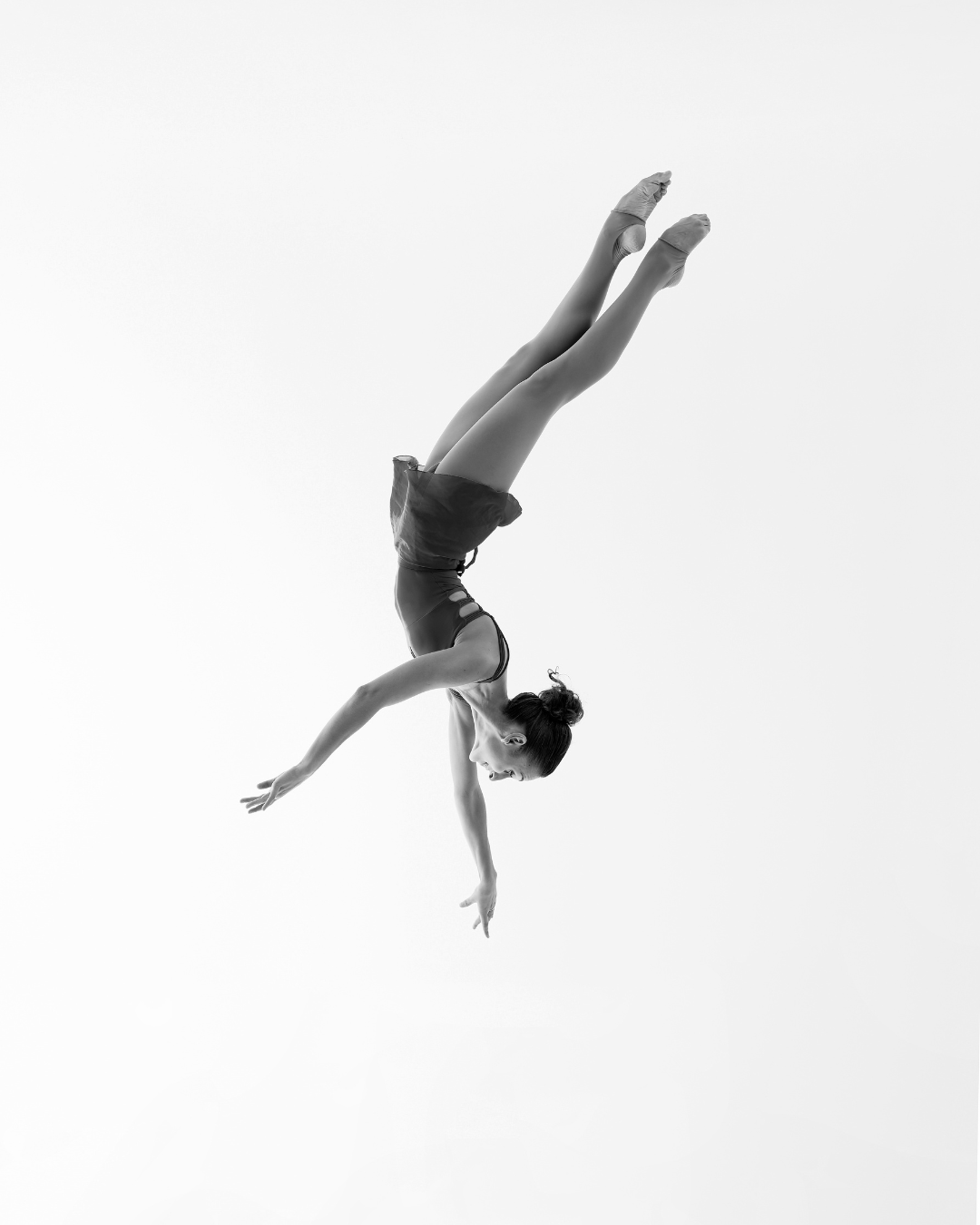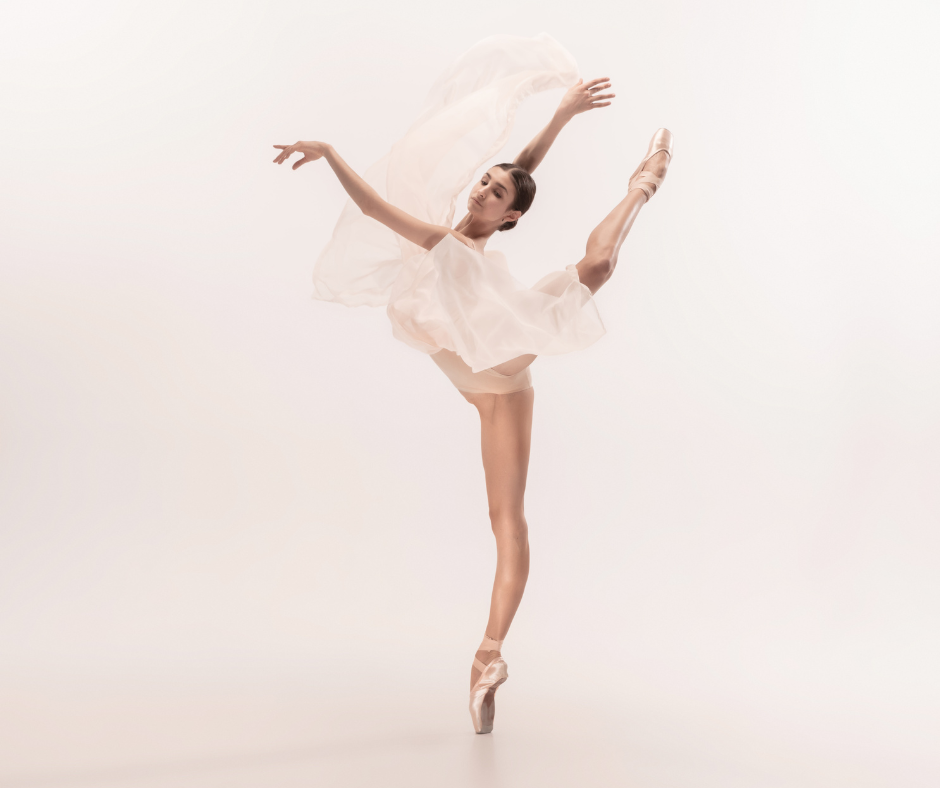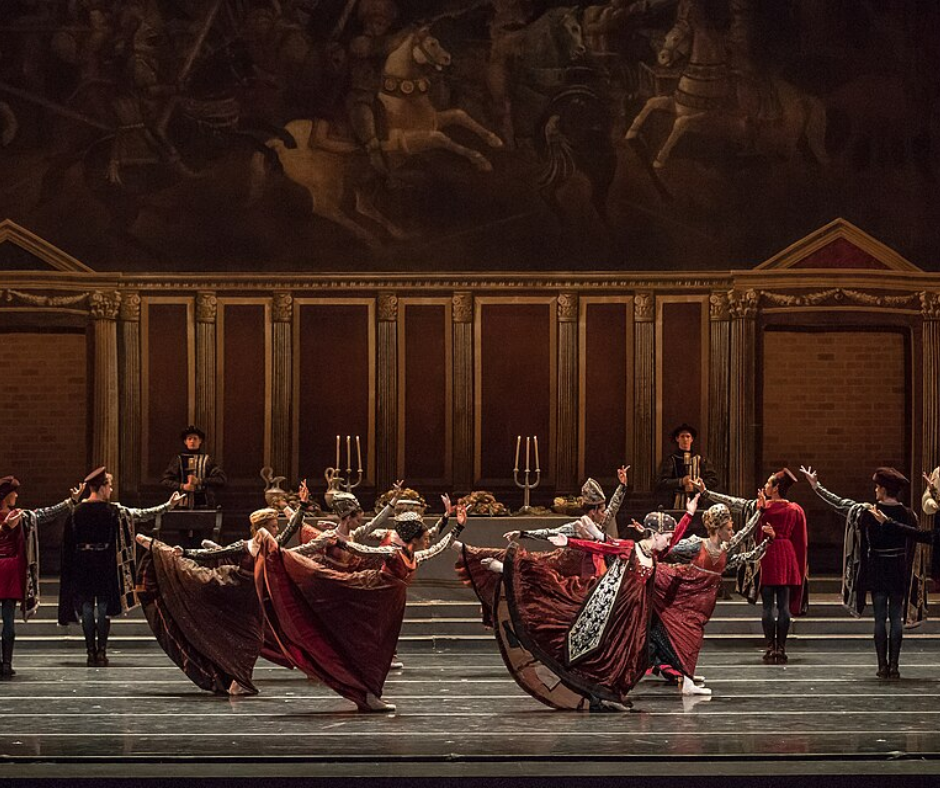Allegro – The Art of Jumping in Ballet
In classical ballet, the term Allégro (from the Italian allegro, meaning “cheerful” or “lively”) refers to all brisk and lively movements—especially jumps. Allégro represents the bright, energetic side of ballet technique and is usually introduced after the body is fully warmed up, often in the final section of a ballet class.
All jumps in ballet fall under the category of Allégro and are typically divided into three main groups:
- Petit Allégro: small, fast jumps such as sautés, échappés, assemblés, and jetés.
- Medium Allégro: jumps with more elevation, including sissonne ouverte and sissonne fermée.
- Grand Allégro: large, powerful jumps like grand jeté, grand pas de chat, cabriole, and more.
Additionally, batterie jumps involve rapid crossing or beating of the legs in the air—such as in entrechat—and may appear in combinations across all three Allégro categories.
A Historical Leap: From Royal Courts to the Romantic Stage
The origins of Allégro trace back to the 17th century and King Louis XIV of France, who himself danced and brought ballet into the royal courts. He is often credited with popularizing airborne steps that would evolve into the intricate entrechat.
During the 18th century, ballerinas like Marie Sallé and Marie Anne de Cupis de Camargo revolutionized women’s ballet technique. They shortened their skirts to showcase precise footwork and dared to leap like their male counterparts—shifting ballet into a new era of agility, speed, and visibility.
In the 19th century, the Romantic ballet La Sylphide, revived by Danish choreographer August Bournonville, further refined Allégro. His version emphasizes petit allégro, with quick, intricate footwork that brings a sense of ethereal lightness to the Sylph character—imagined as a creature made of air, symbolizing the four elements: air, earth, water, and fire.
Technique: The Four Phases of a Perfect Jump
To perform a ballet jump with grace and control, dancers must master four technical phases:
- Demi-plié (preparation): The knees bend while keeping the feet flat and grounded, activating the legs and feet for takeoff.
- Takeoff: The heels lift, toes push off, and legs stretch with power and precision.
- Culmination (flight): At the jump’s peak, the dancer appears to suspend in the air, demonstrating elevation and ballon—the illusion of effortless floating.
- Landing: The dancer returns softly to the floor, rolling through the foot from toe to heel into a quiet demi-plié to absorb the impact.
Jumps can be vertical (moving upward and downward) or horizontal (traveling across space).
Musicality, Strength & Coordination
Two key technical concepts in jumps are:
- Elevation: the ability to leap high, with control, elasticity, and musical phrasing.
- Ballon: the impression of lightness and suspension, especially visible in large jumps.
To support jumps, dancers use linking steps such as glissade, chassé, pas de bourrée, pas couru, temps levé usw. These transitions help maintain rhythm, flow, and breath, while also preparing the body for the next jump.
Allégro combinations develop not only leg and foot power but also full-body coordination—arms, head, gaze, and musical timing. In performance and class, dancers often form symmetrical groupings, using lines or circles to frame the principal dancer at center stage.
Relaxation: The Hidden Power Behind Each Jump
While jumps require explosive energy, true artistry lies in knowing when to relax. Muscular relaxation between contractions ensures good circulation, prevents injury, and enhances endurance. A dancer who allows moments of softness between efforts creates space for grace, fluidity, and expressive clarity.
Tension held too long makes movement look forced or stressed. By contrast, a dancer who alternates between activation and release brings natural rhythm and poetry to the stage.
Conclusion
Allégro is not just about athleticism—it’s about musical joy, expressive flight, and the poetic interplay of strength and softness. Whether in a small saut or a soaring grand jeté, the dancer connects heaven and earth, gravity and grace, through disciplined artistry.
Curious how to bring more ballon and elevation into your jumps? Book your 1:1 personalized training and let’s take your Allégro to the next level.
References:
- “The Ballet source” Kim Hungerford 2016
- Homans, Jennifer. Apollo’s Angels: A History of Ballet. Random House, 2010.



